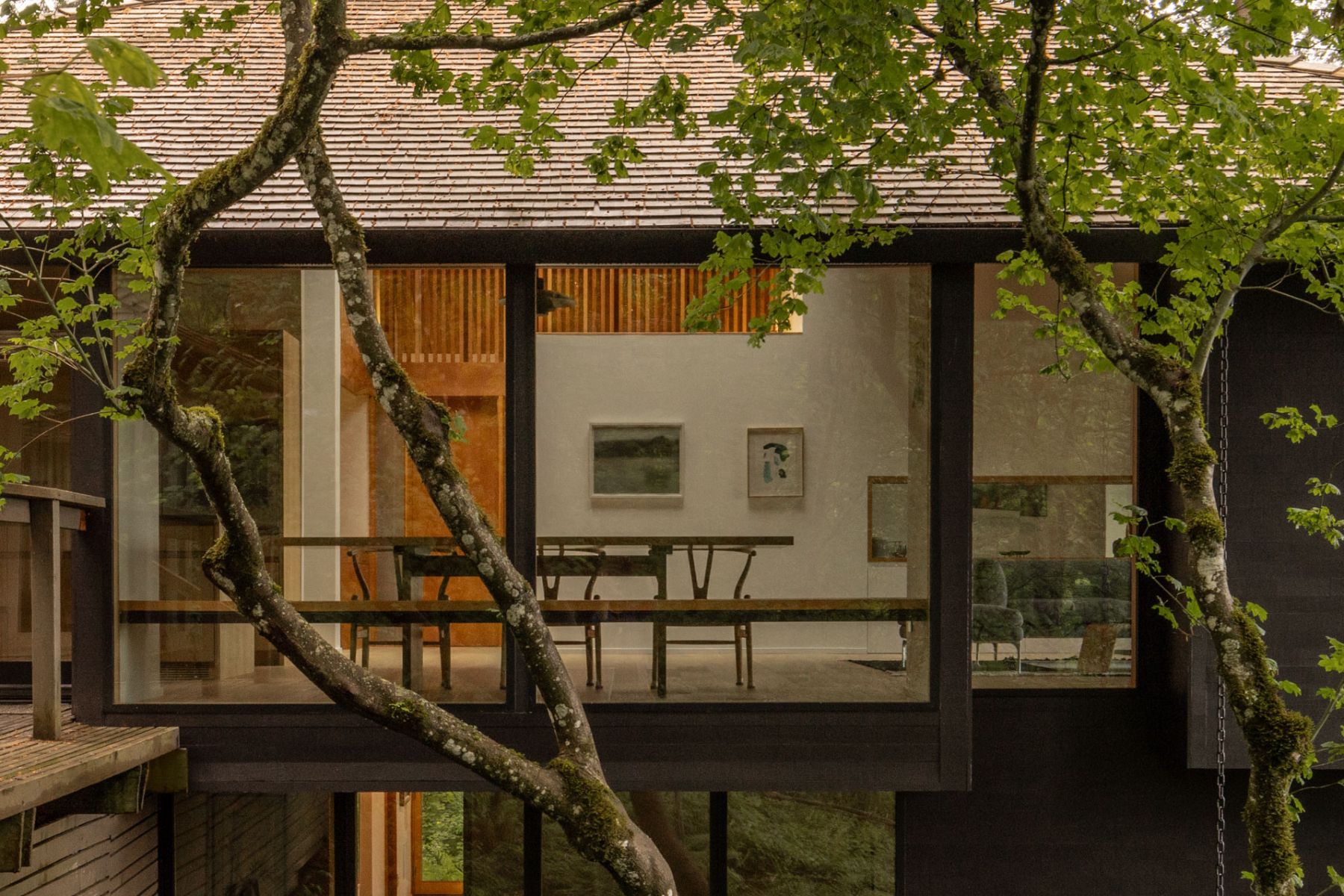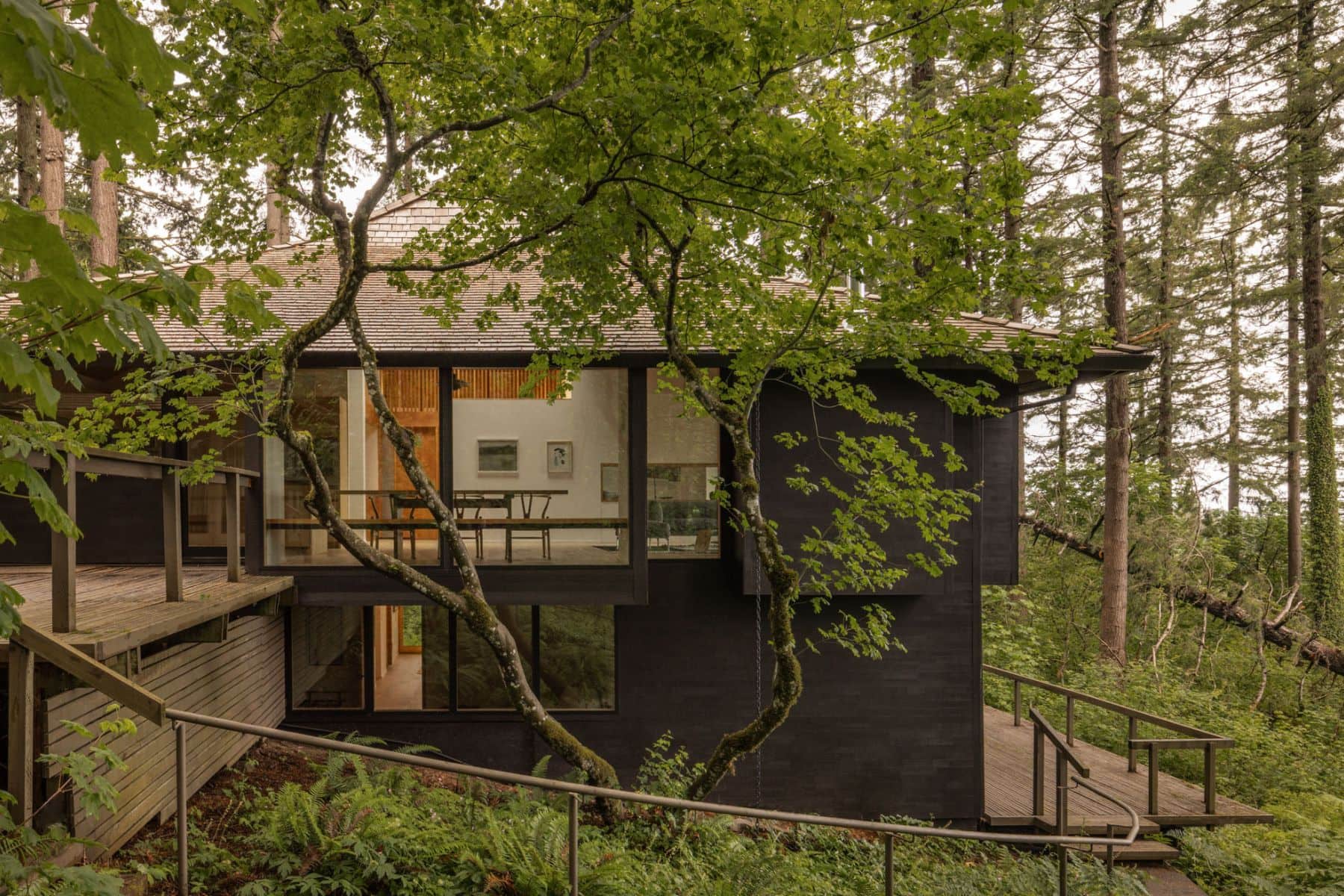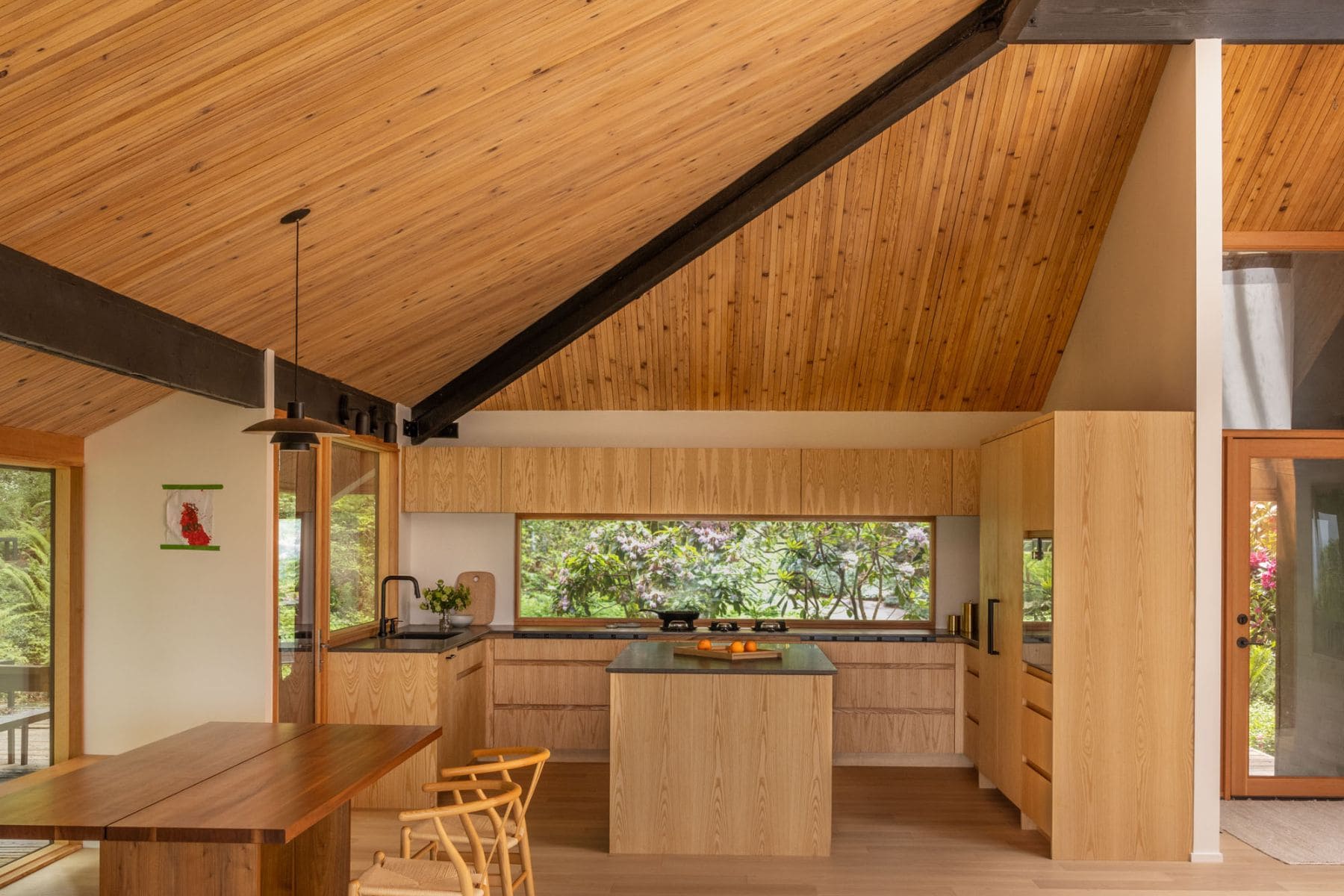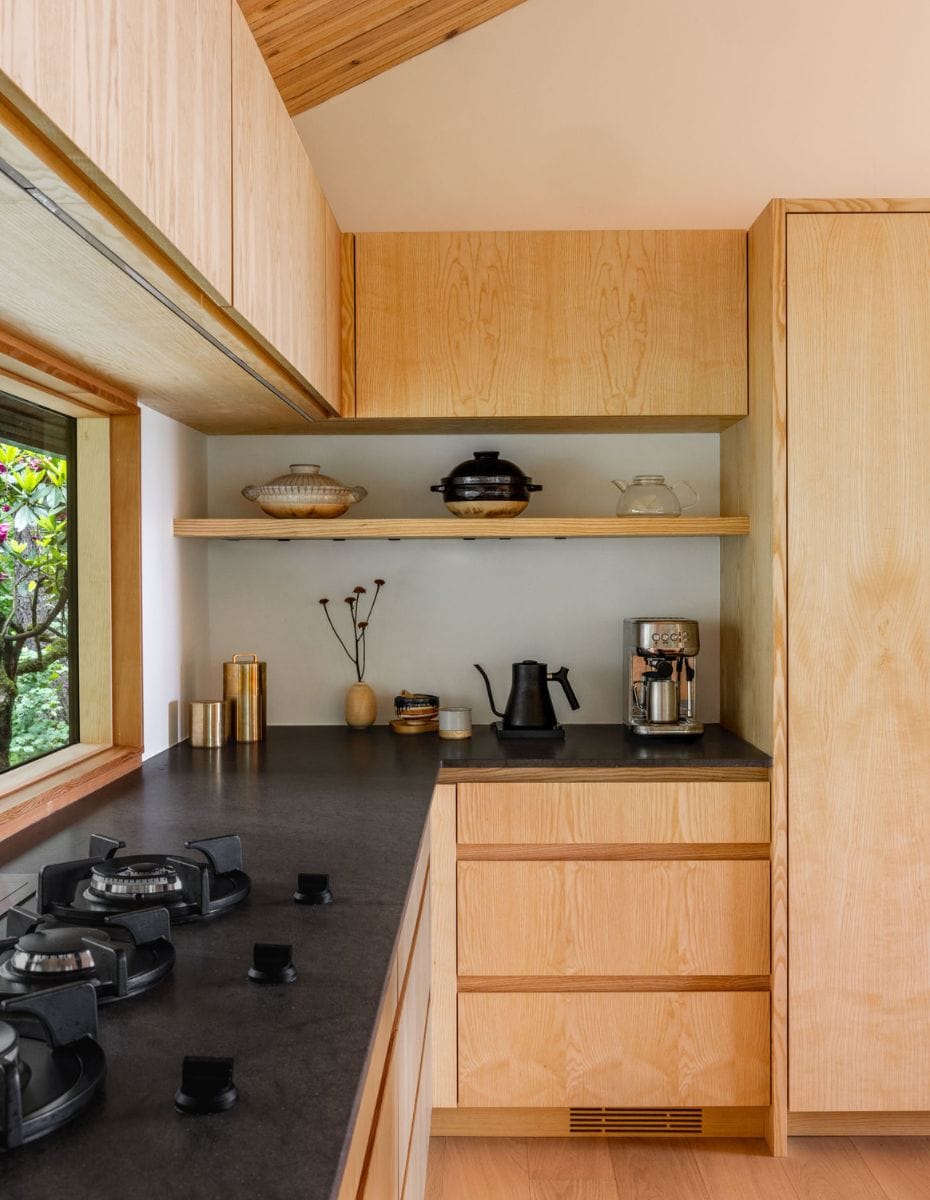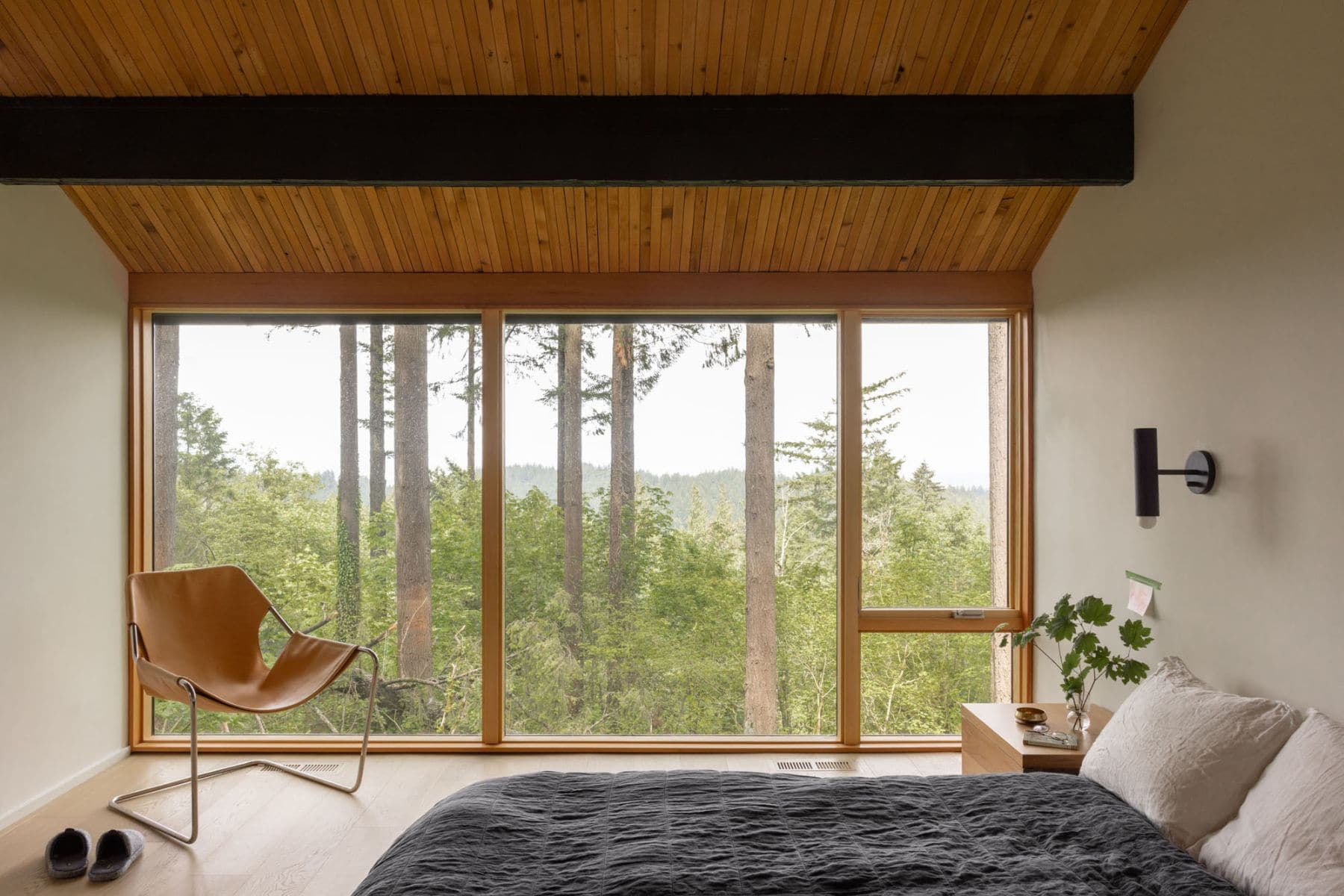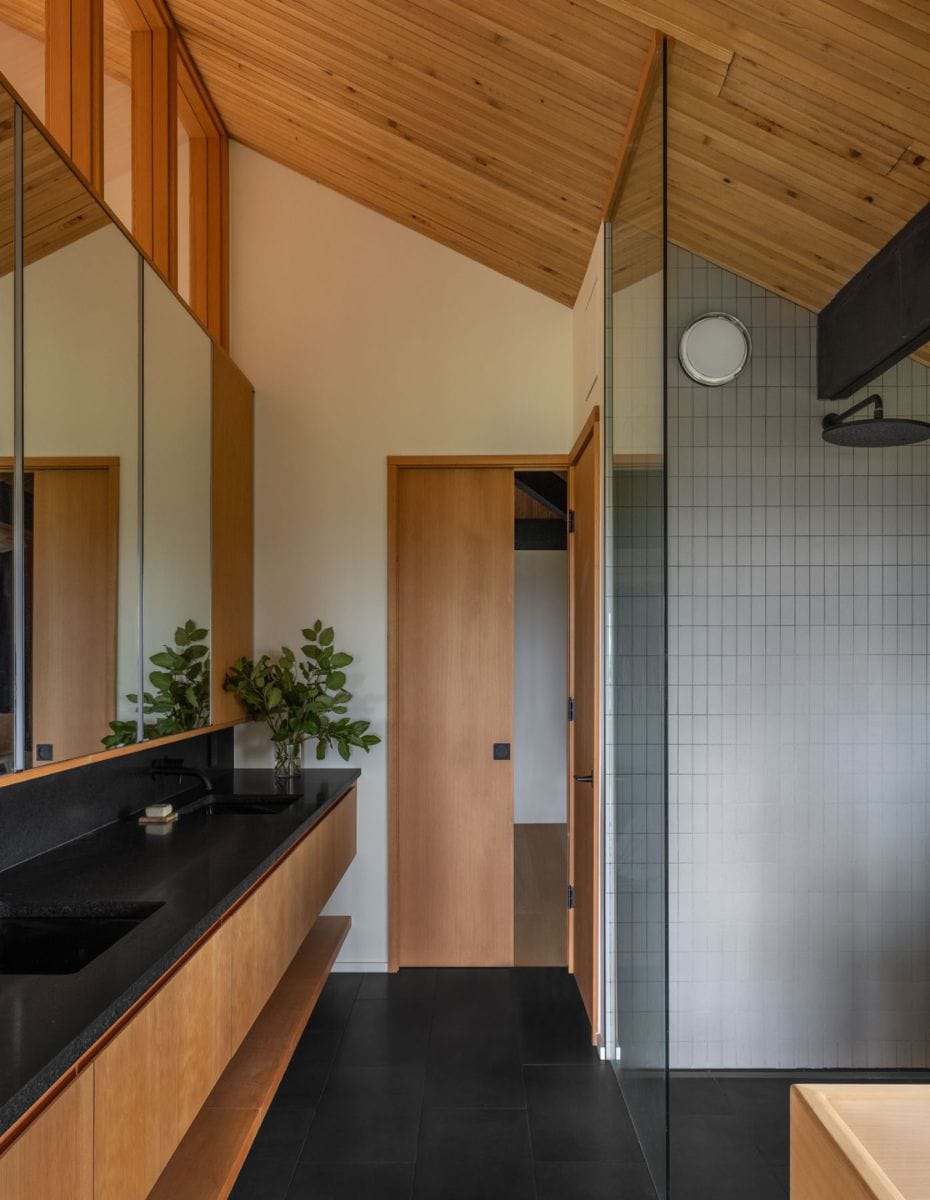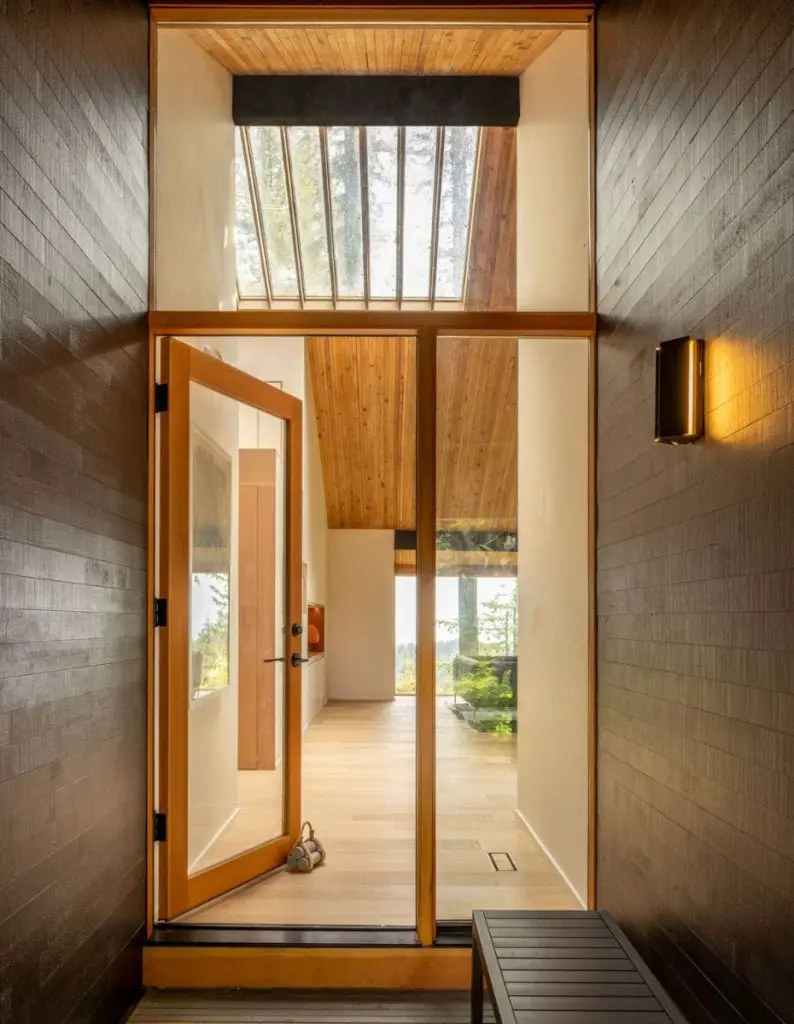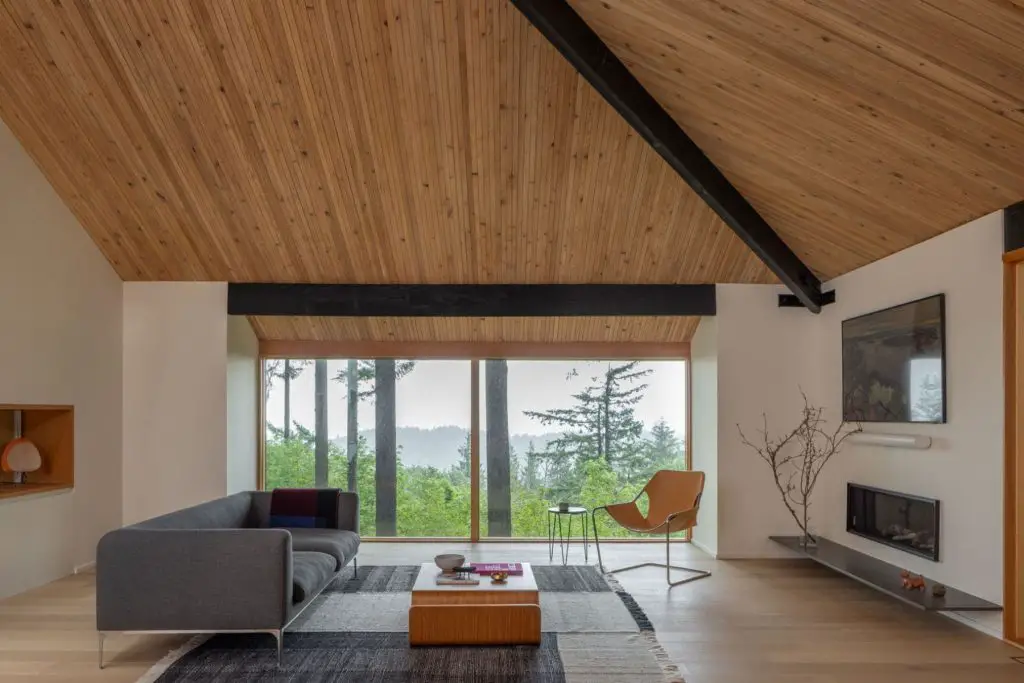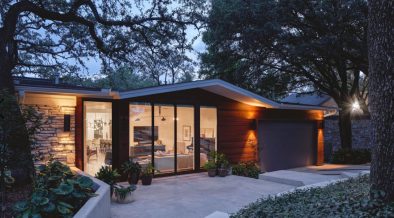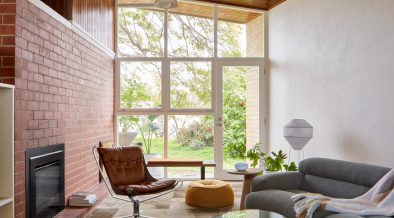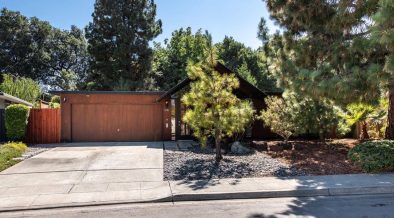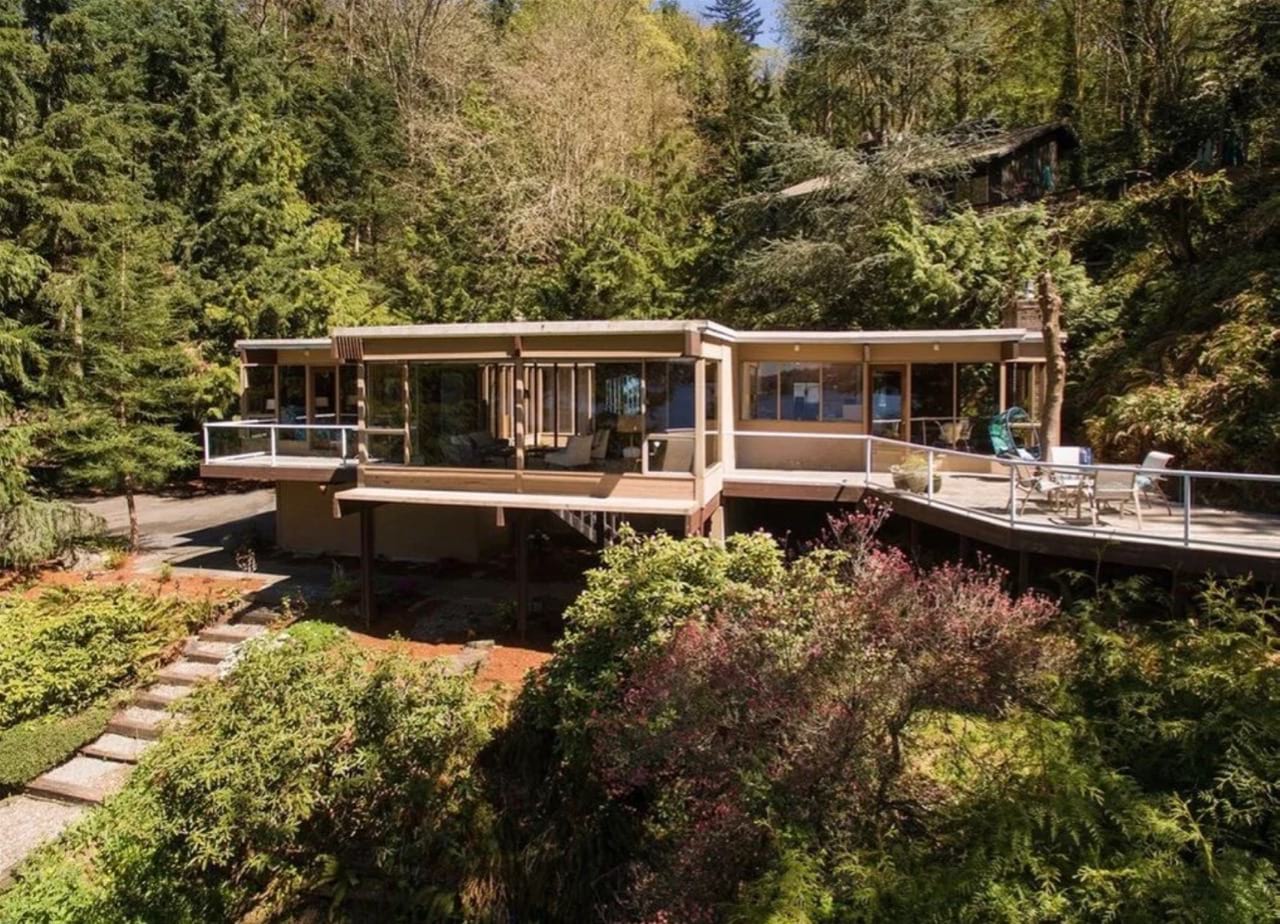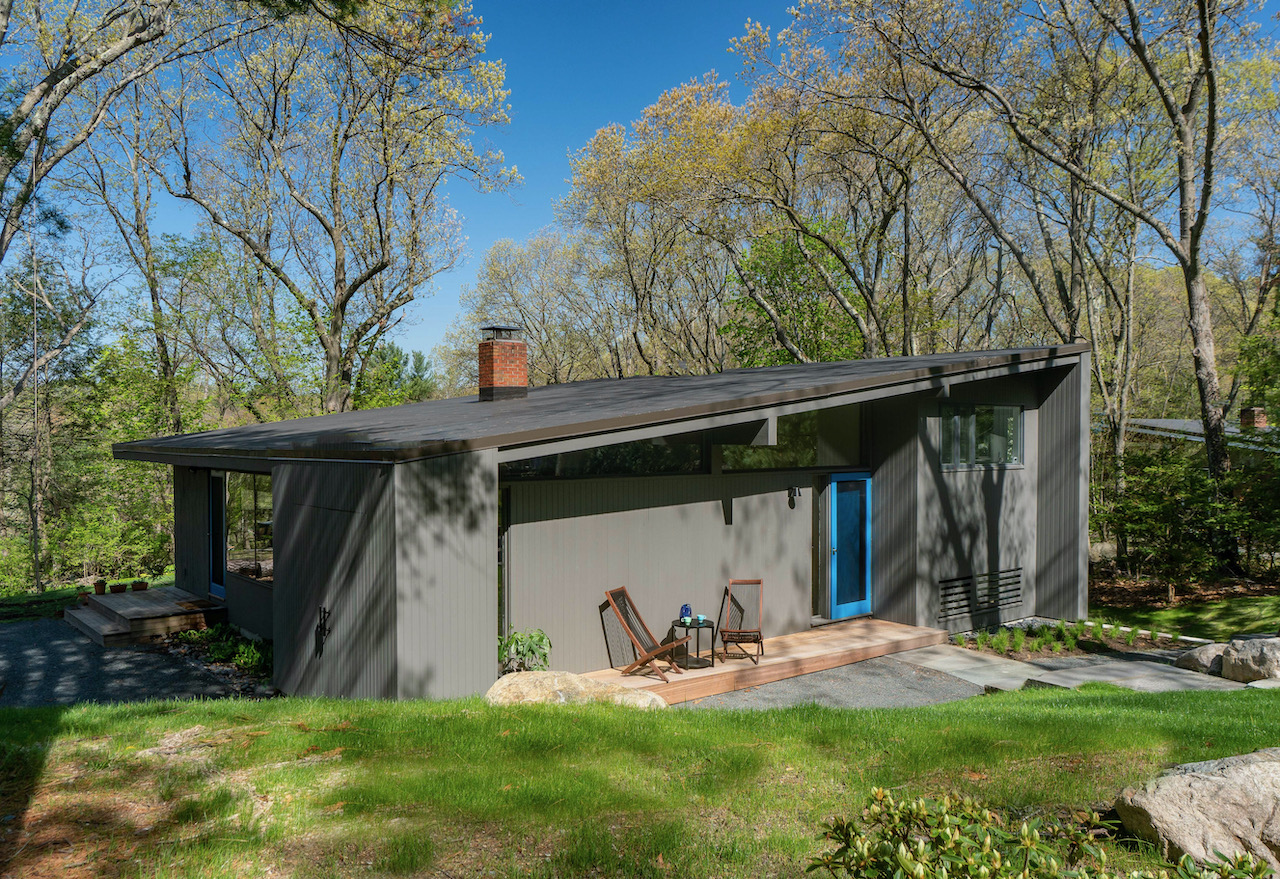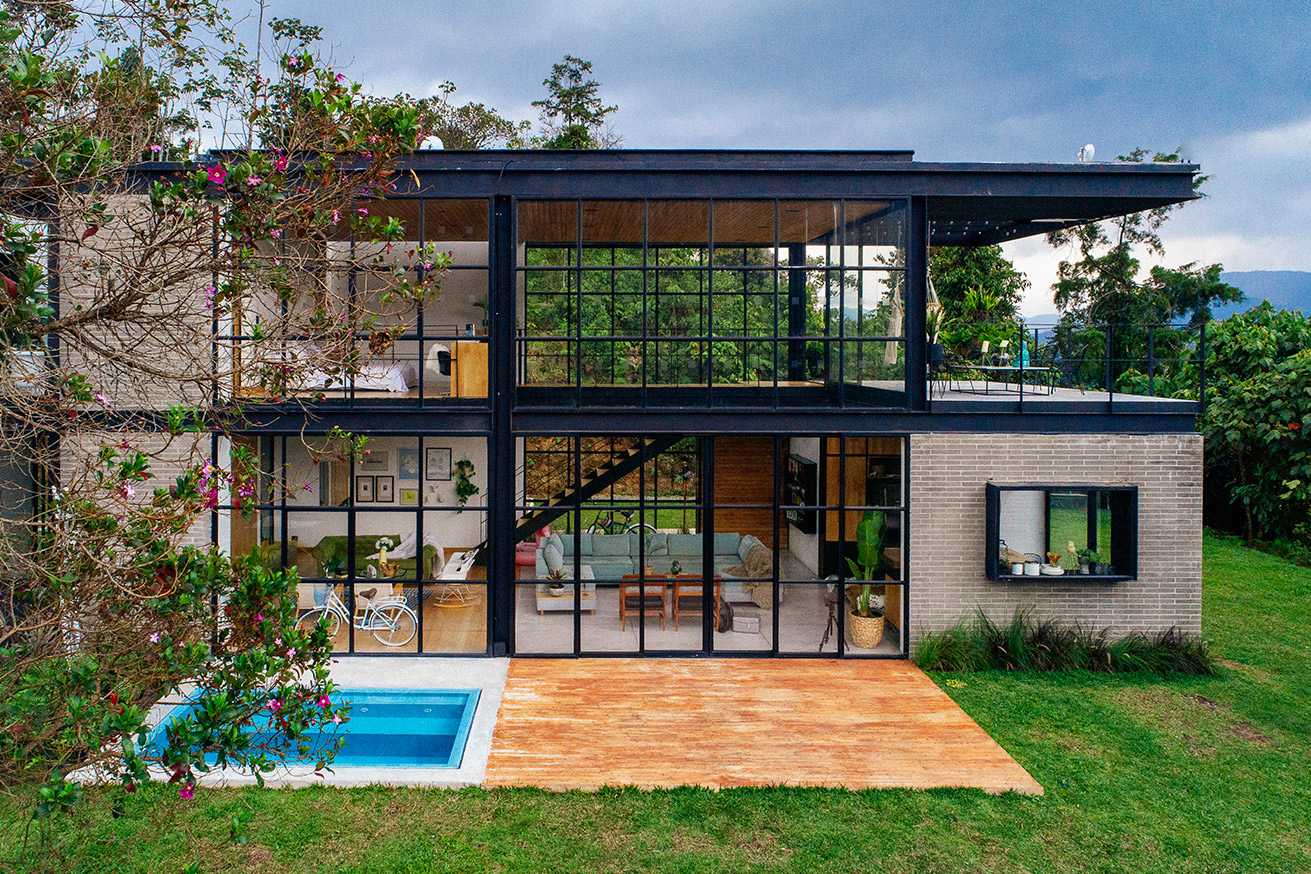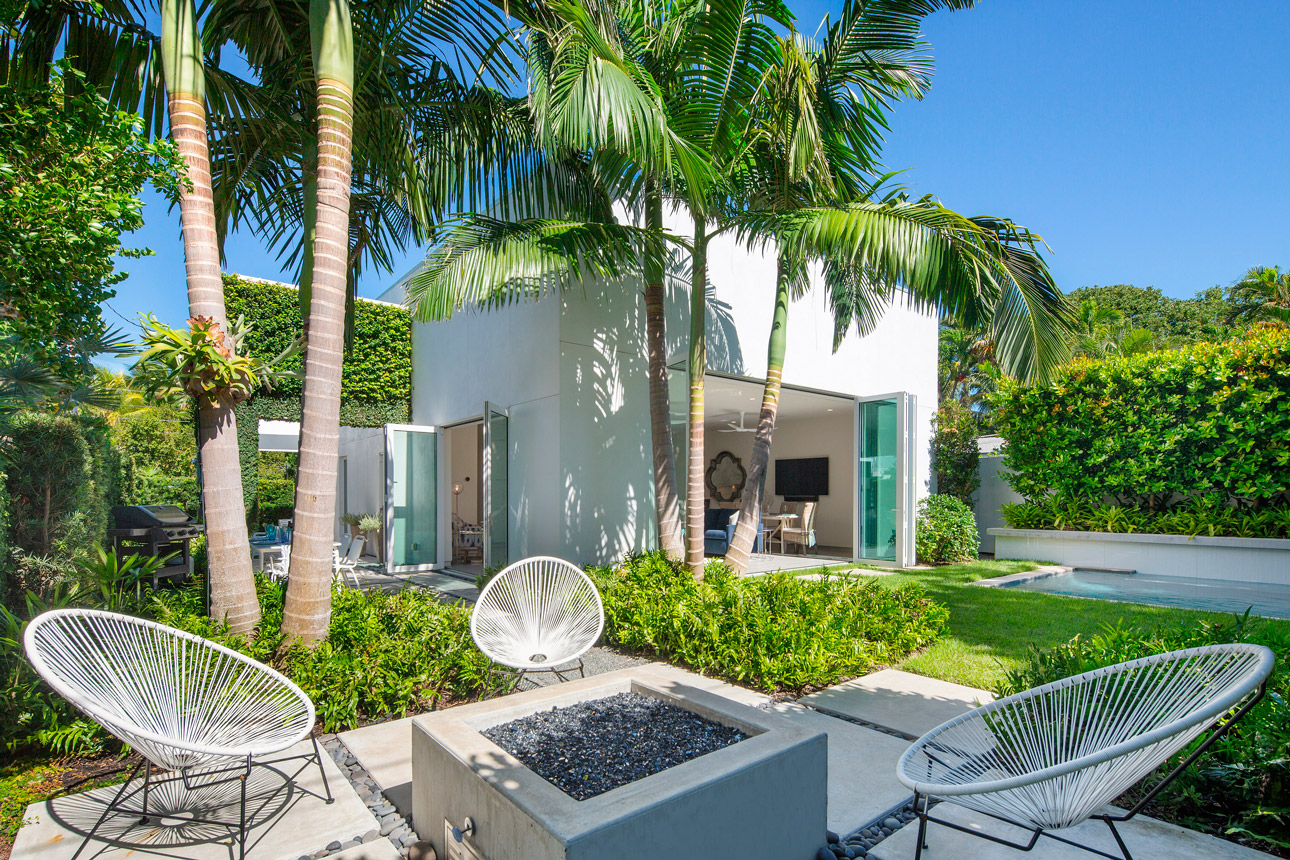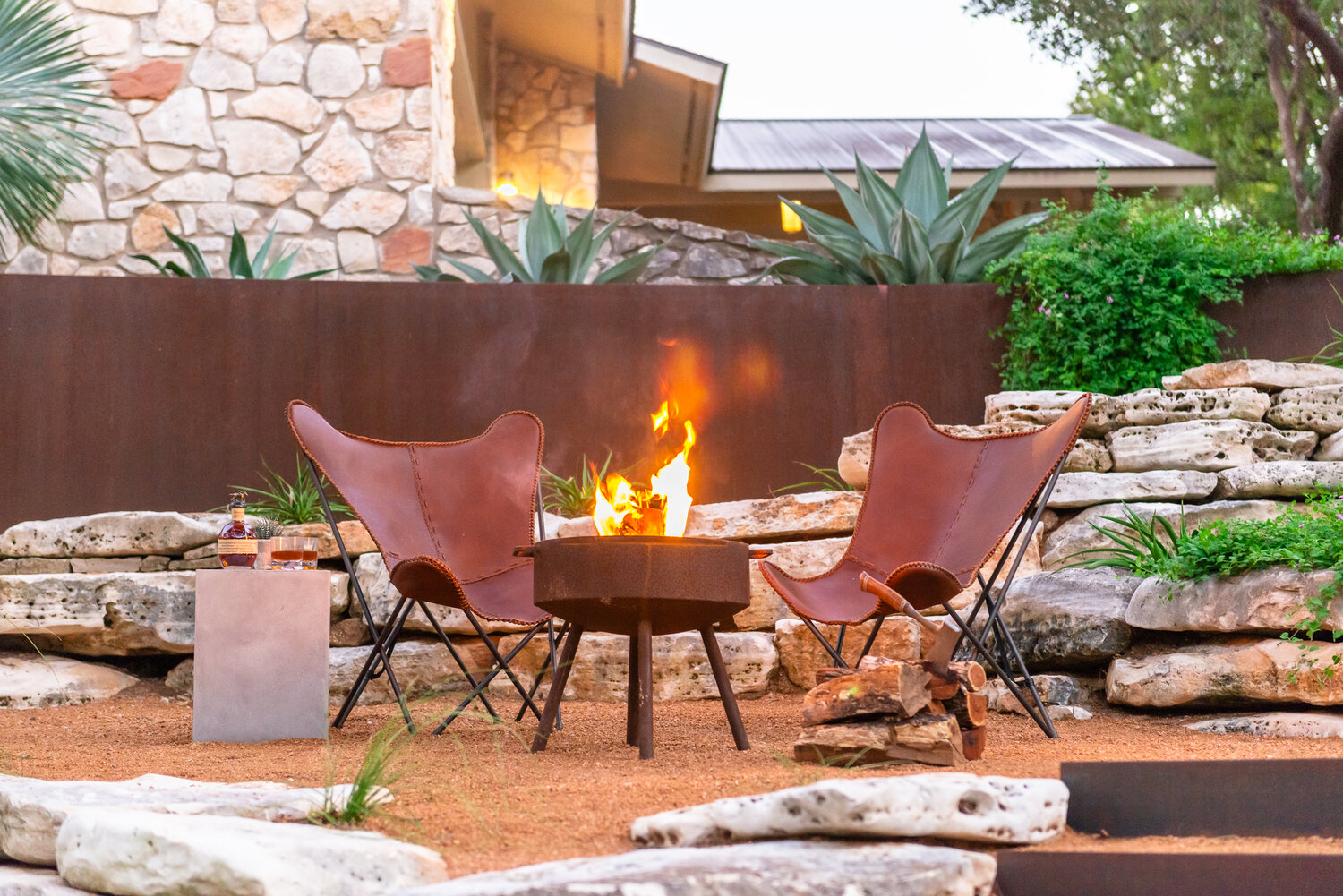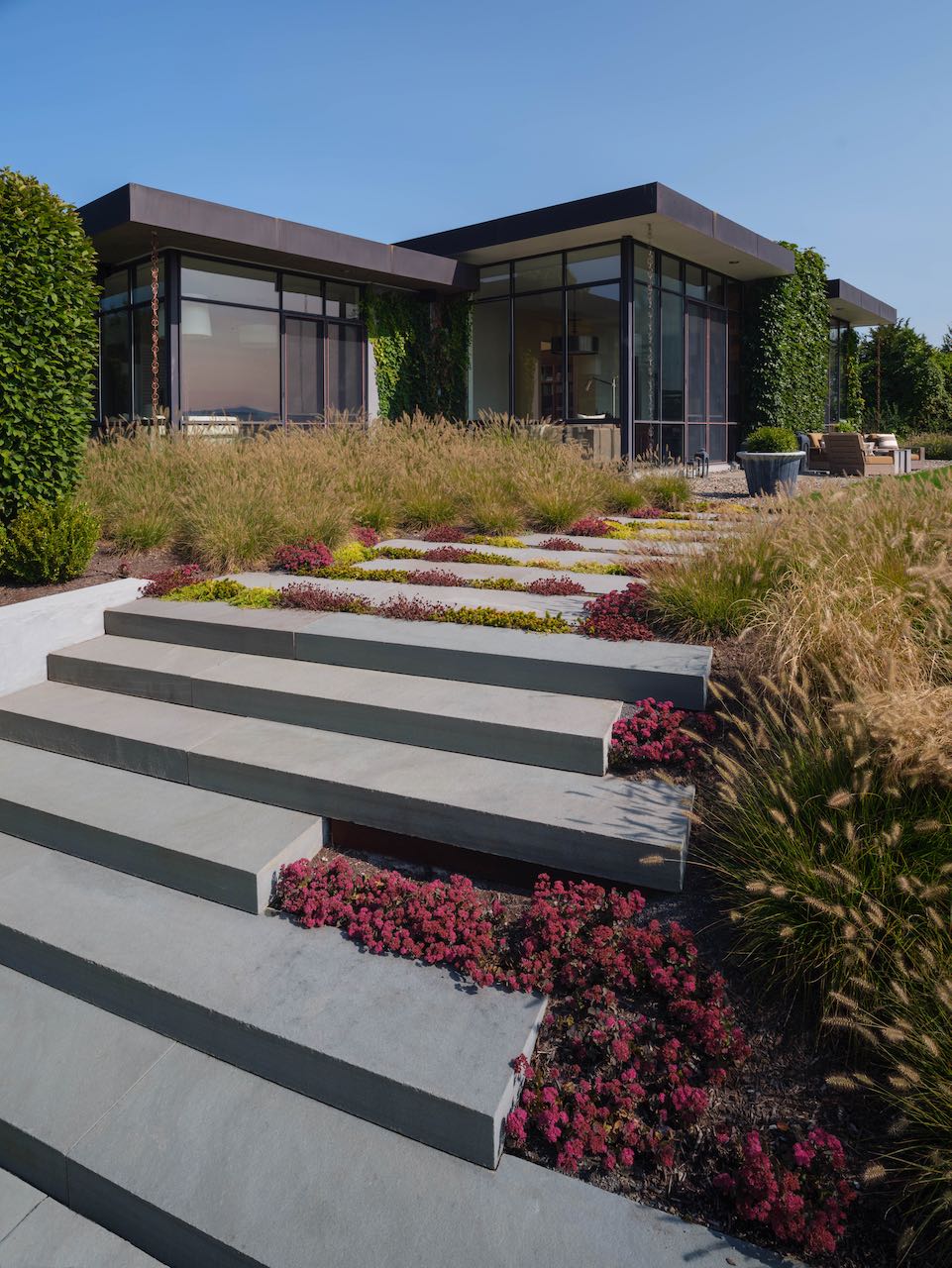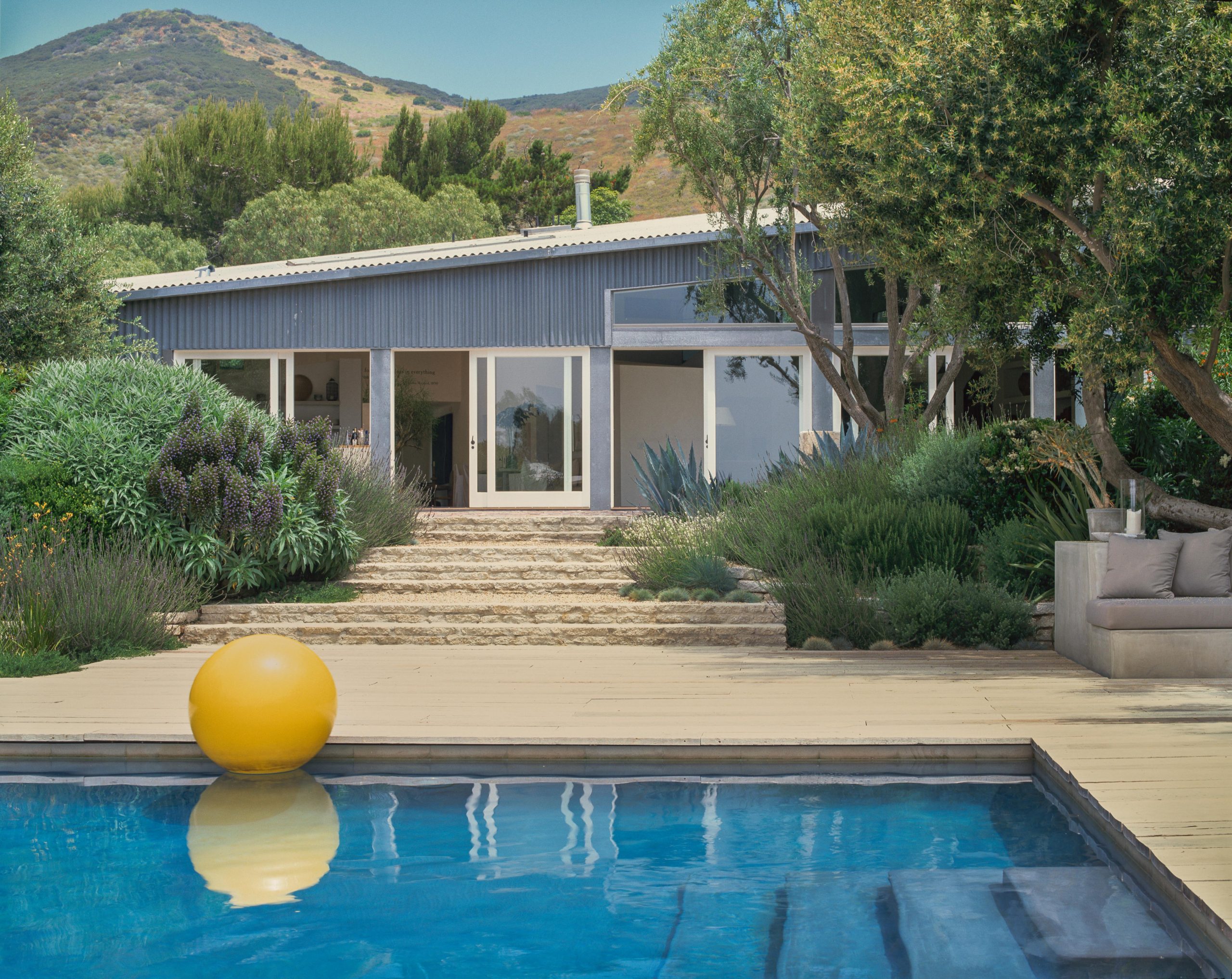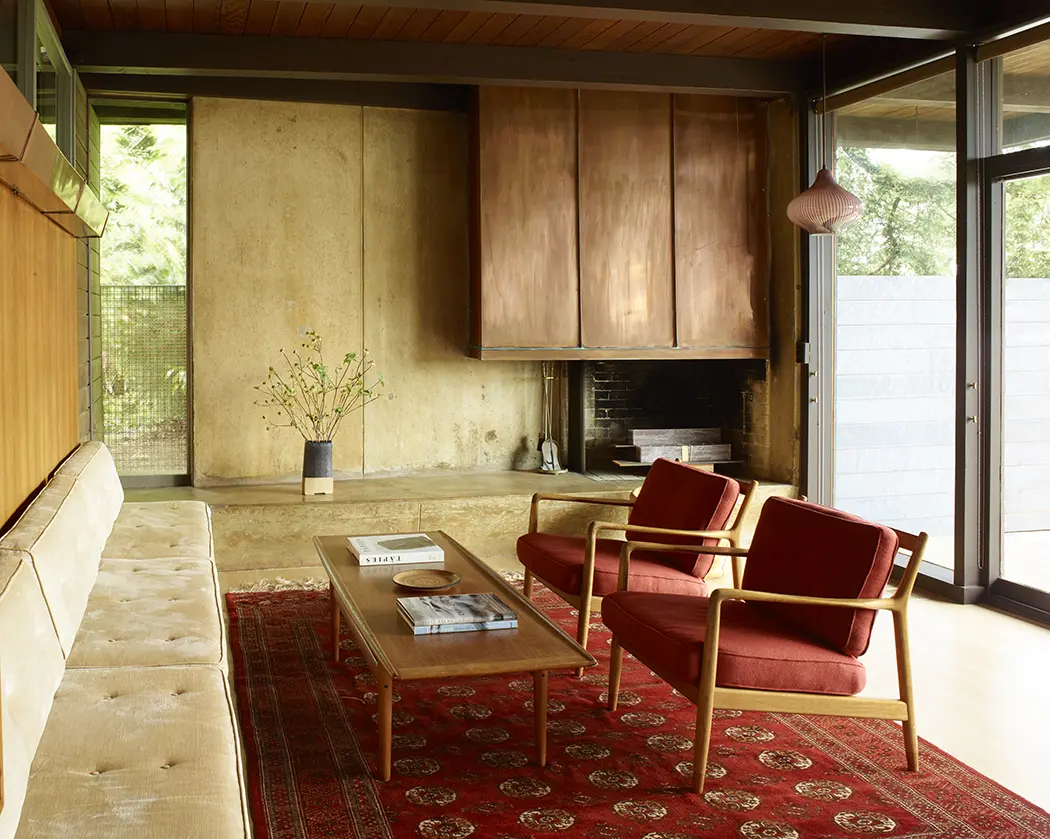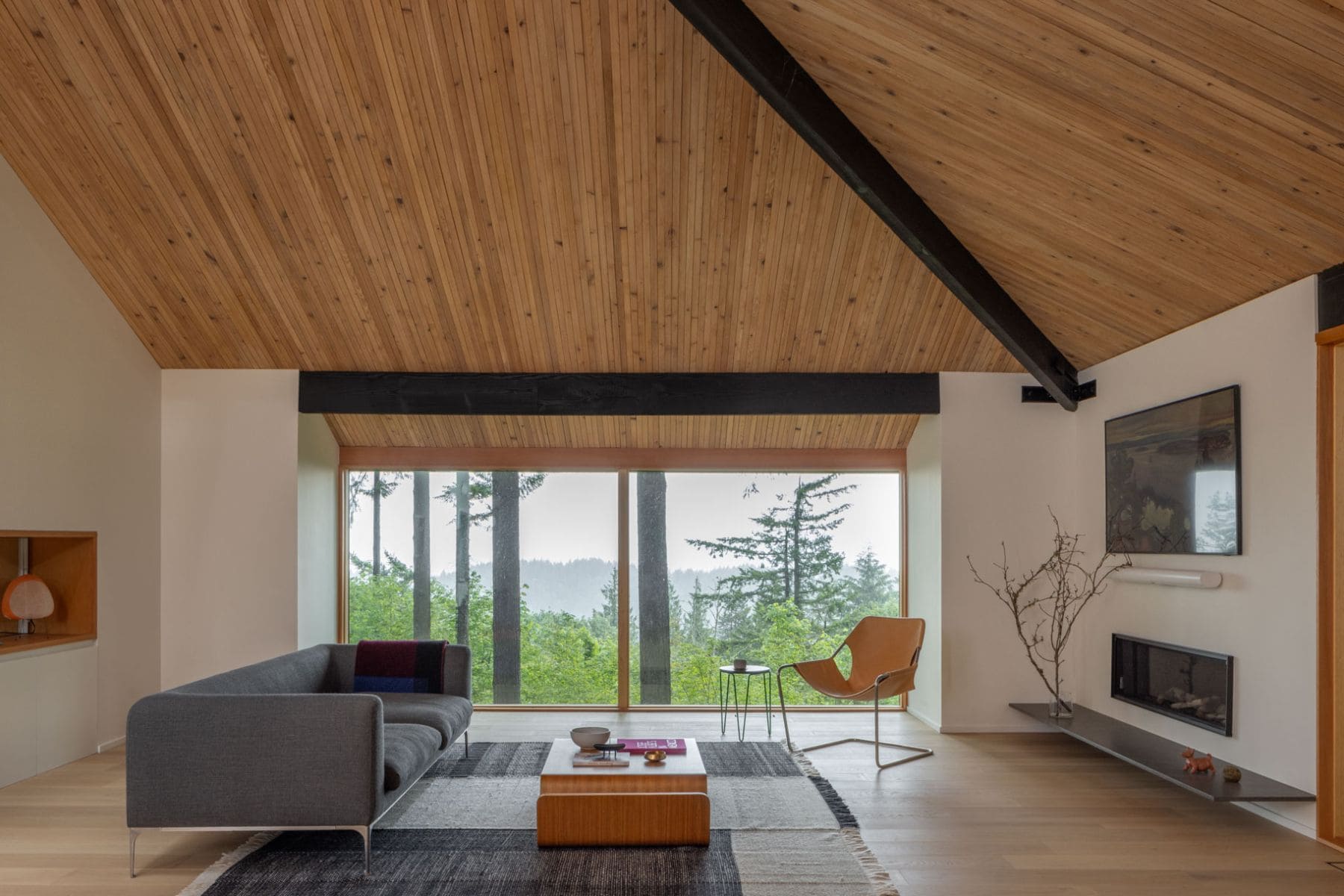
Tucked into the west hills of Portland, this mid-century home has been reimagined with a quiet, modernist approach that opens it to light, forest, and flow. Originally designed by Saul Zaik in 1963, the house now reflects a blend of Pacific Northwest warmth and Japanese-influenced minimalism, thanks to a thoughtful remodel by SHED Architecture.
A detached garage and studio mark the street-side entry. From there, an elevated deck leads to the main house and a nearby tea pavilion, connecting the site’s scattered structures through a shared sense of calm and elevation.
The new owners—a young couple—were drawn to the home’s architectural pedigree and its potential for openness and clarity. They wanted to better connect to the surrounding forest, increase natural light, and create a more usable layout without losing the home’s original spirit. Key changes included replacing the narrow spiral staircase, reorganizing private spaces, and making the outdoor decks more accessible and functional.
Inside, removing the central loft and spiral stair made way for a vaulted ceiling of nail-laminated wood and a generous skylight. The result is a main floor that feels both expansive and grounded, with forest-filtered light shaping the mood throughout the day. The entry sequence now leads past a new powder room and closet—spaces that borrow natural light from above.
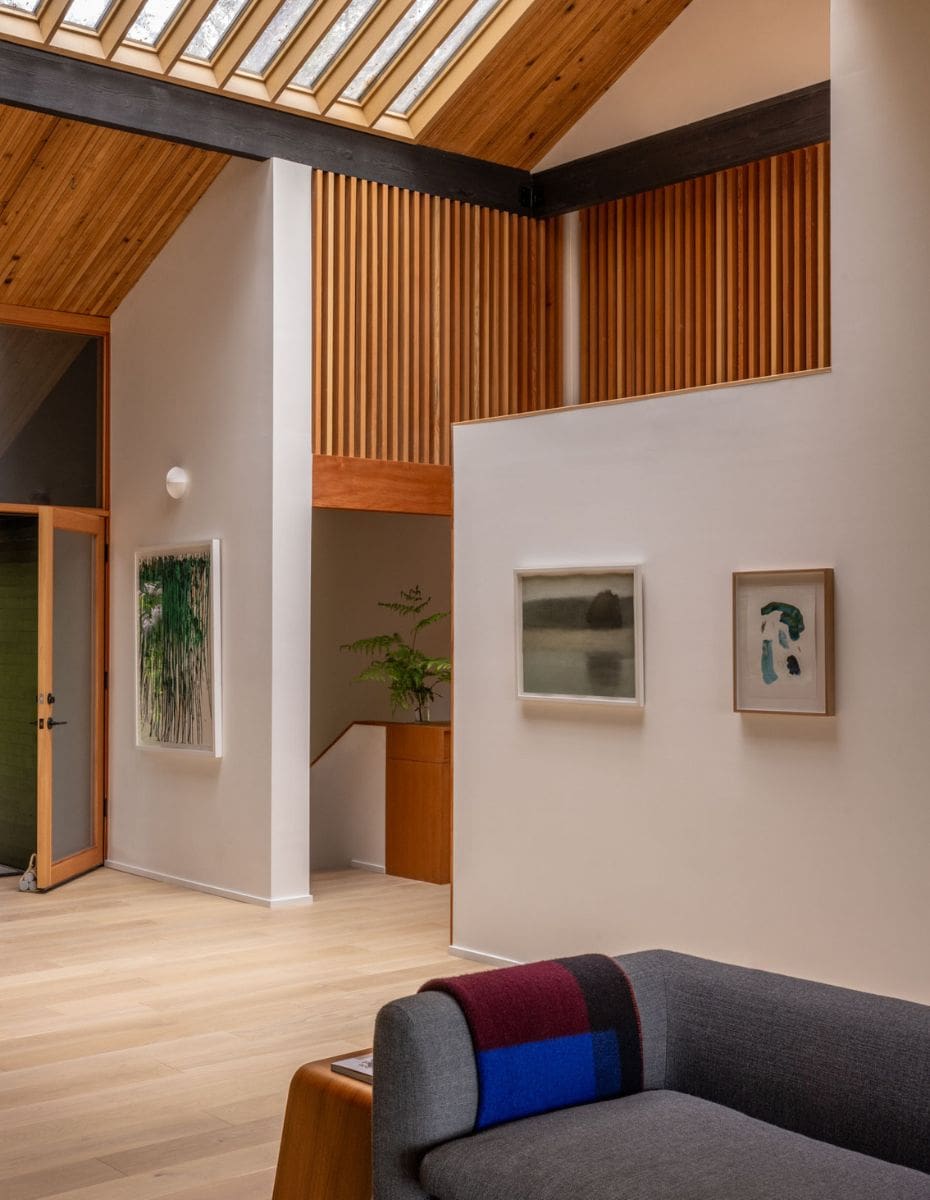
The main living area runs along the south side of the house, opening up views and improving circulation. The relocated fireplace shifts the room’s focus toward the trees beyond, and on clear days, Mount Hood appears in the distance. The kitchen introduces several new sightlines: a low horizontal window above the cooktop looks onto mature rhododendrons, while a picture window and glass door near the sink connect directly to the deck and tea house. A custom fir bench anchors the dining nook in front of floor-to-ceiling glass, giving the space a sense of permanence without excess.
The primary suite occupies the north side of the main level, separated by the open core beneath the skylight. A new fir slat screen lines up with the existing beams to filter daylight into the hall and bath. What was once a cramped bedroom and bath is now a more expansive space with a Japanese soaking tub, custom volcanic stone vanity, LED-lit medicine cabinets, and a walk-in closet. Transom windows keep the space connected to the home’s central light source.
A new switchback stair volume—also clad in wood slats—leads to the lower level, where three flexible rooms support guest stays, work, or workouts. Floor-to-ceiling windows open the hangout space to the forest edge. A wine cellar, bathroom, and laundry round out the layout below.
